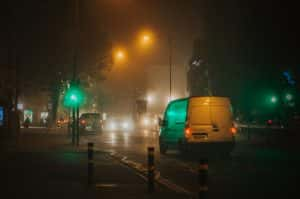 Driving can often seem like a mundane task and a skill which you may take for granted when transporting yourself from A to B, but according to the Royal Society for the Prevention of Accidents (RoSPA) 40% of all collisions occur when it is dark – and this number spikes year on year. This month, we are on hand to provide you with our top tips to keep you safe on the road when driving in the darker hours.
Driving can often seem like a mundane task and a skill which you may take for granted when transporting yourself from A to B, but according to the Royal Society for the Prevention of Accidents (RoSPA) 40% of all collisions occur when it is dark – and this number spikes year on year. This month, we are on hand to provide you with our top tips to keep you safe on the road when driving in the darker hours.
Be mindful of your lights
As well as being deemed highly unsafe, driving without headlights during darker hours is in fact illegal. To prevent yourself from facing legal repercussions, you should take care in regularly checking your lights before heading out, especially when you are planning on driving at night. This includes your headlights, indicators, brake lights, fog lights and reverse lights. If you notice that a bulb has gone, you should have it replaced before heading out on the road. The way in which you use your lights will also play a part in your ability to stay safe. You should turn on your dipped headlights one hour before sunset, and keep them on for one hour after sunrise, ensuring that you are always visible to other road users.
Keep your focus on the road
Driving during the night can often be dazzling for drivers, with the headlights from oncoming vehicles forming a distraction that breaks your attention. You must keep your awareness on your side of the road, allowing you to guarantee that you are staying within the white lines of your lane and are travelling at the correct speed limit. If you find that the oncoming car has their headlights on full beam, with a brightness which may temporarily impair your vision, you could prevent yourself from being dazzled by keeping your eye on the road markings directly ahead of you, including road markings and road signs.
Keep you mirrors positioned correctly
We know the feeling – having a car driving behind you with LED headlights that seem to be shining brighter than the sun can be extremely off putting – especially when you’re unsure if they’re flashing you or just driving over a bump in the road! It can often feel tempting to rearrange your mirrors ever so slightly to remove the glare from your side eye, but you mustn’t do this. Remember – your wing and rear-view mirrors are essential for safe driving and repositioning them creates the risk that you’ll forget to return them to the correct position. Instead, keep your eyes on the road ahead of you and remember that they (hopefully!) won’t stay behind you for long.
Enhance your observation
Whilst you drive in the dark, you should heighten your observation and awareness, keeping a careful eye out for vulnerable road users – especially in poorly-lit and residential areas. This consists of pedestrians, cyclists and animals. Not all will be dressed appropriately, and so taking extra care will allow you enough time to react appropriately, keeping everyone safe and free from harm. If vision is still difficult, you may find it beneficial to turn your music off and open a window slightly, allowing you to hear any faint conversation or the rattle of a bike.
Practice makes perfect
If driving in the dark is something which makes you nervous, you should take the time to practice. Travelling alongside a passenger could be beneficial for the first couple of journeys, allowing you to depend on another set of eyes whilst you adjust the difference in conditions. This could be a friend or family member, or even a driving instructor. Nighttime driving lessons or refresher sessions are offered by many driving schools and will provide you with the best knowledge for safe driving in the dark.
At Pace Rent A Van, we supply rental vans through the simplest process. If you need a vehicle overnight, we have the solution for you. For more information or for any enquiries, get in touch. Call us on 020 7277 9853 or email us at info@pacevanhire.com today.




